 |
 |
 |
| |
Treatment Outcomes With 8, 12 and 24 Week Regimens of Ledipasvir/Sofosbuvir for the Treatment of Hepatitis C Infection: Analysis of a Multicenter Prospective, Observational Study
|
| |
| |
Reported by Jules Levin
AASLD 2015 Nov 13-17 San Francisco
N Terrault, S Zeuzem, AM Di Bisceglie, JK Lim, PJ Pockros, LM Frazier, A Kuo, AS Lok, ML Shiffman, Z Ben Ari, T Stewart, MS Sulkowski, MW Fried, and DR Nelson for the HCV-TARGET Study Group


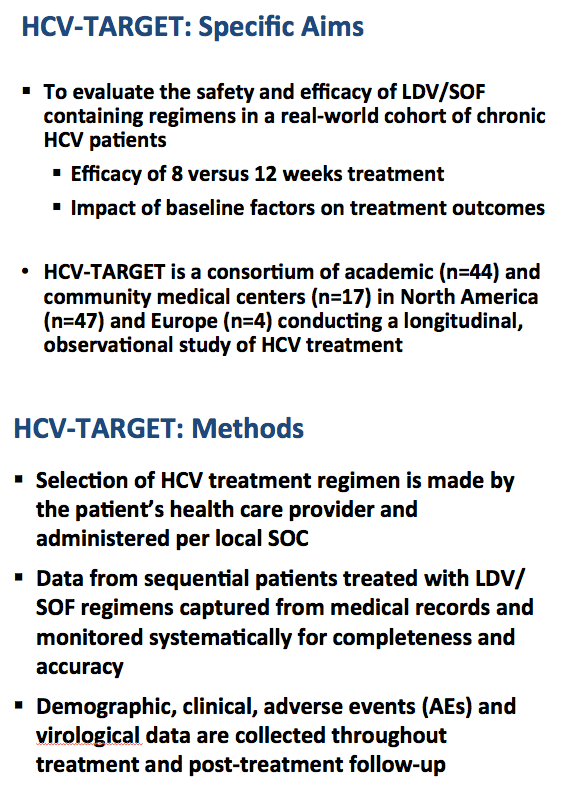
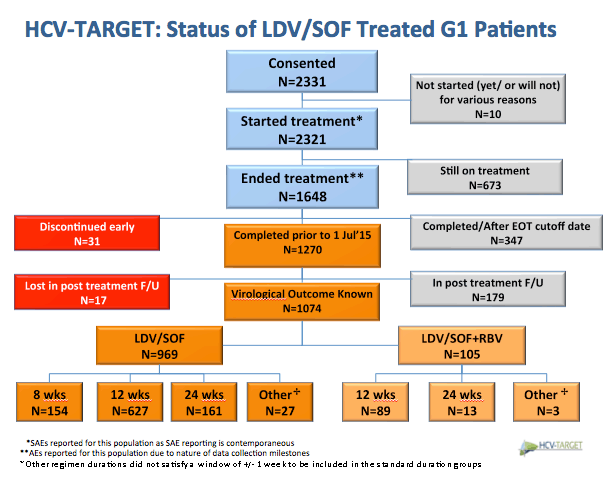
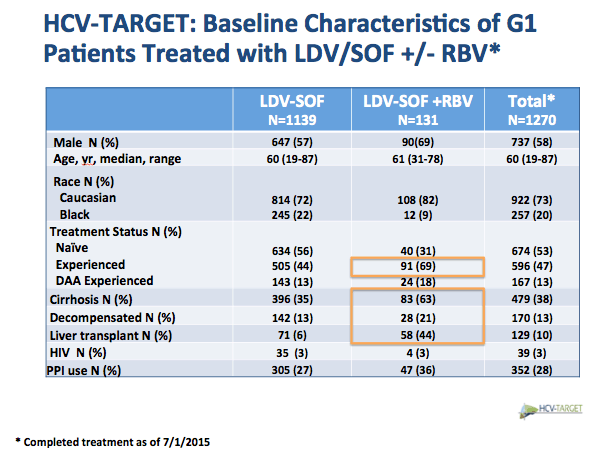
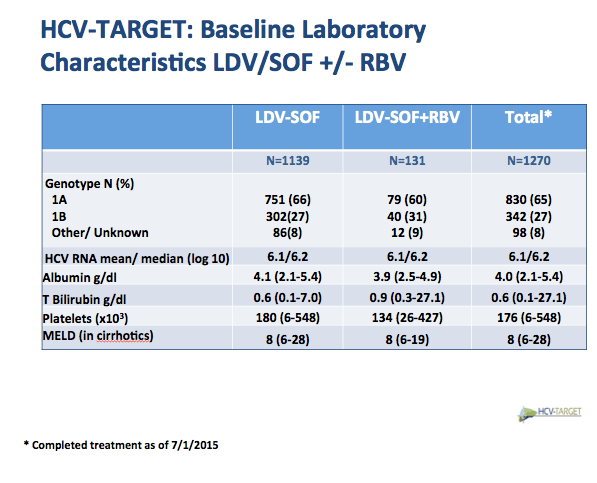
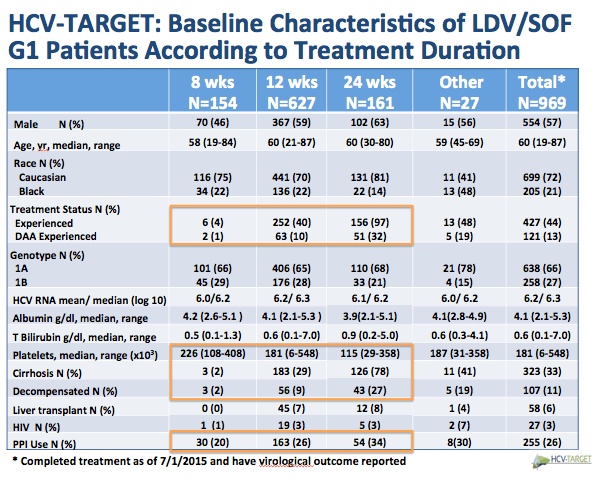
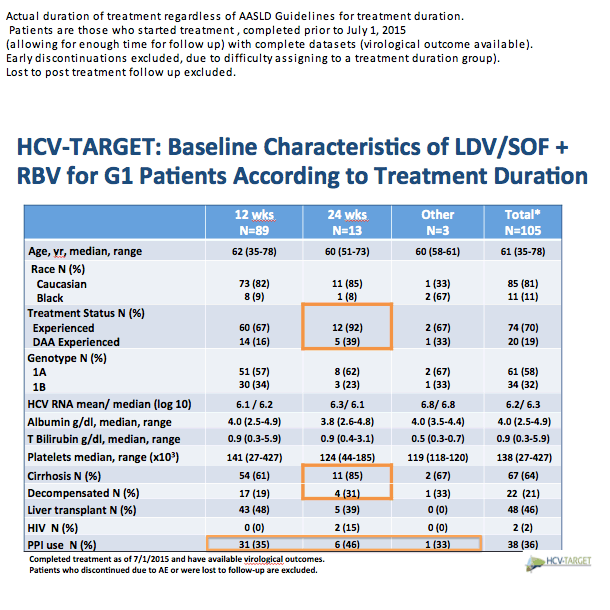
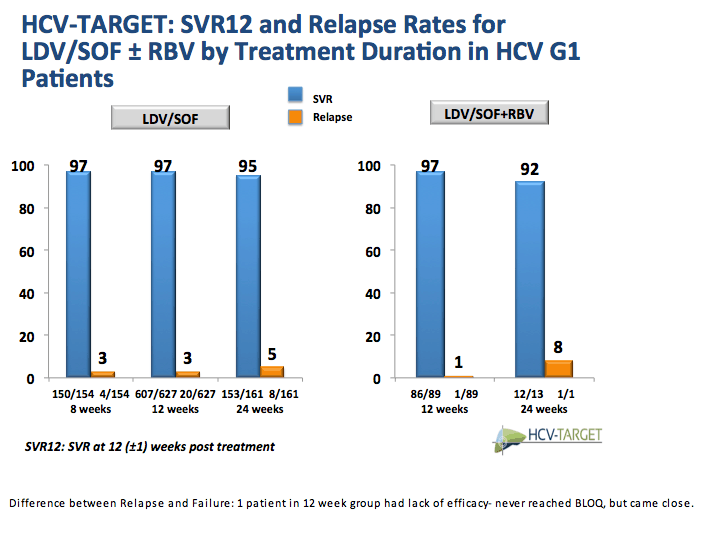
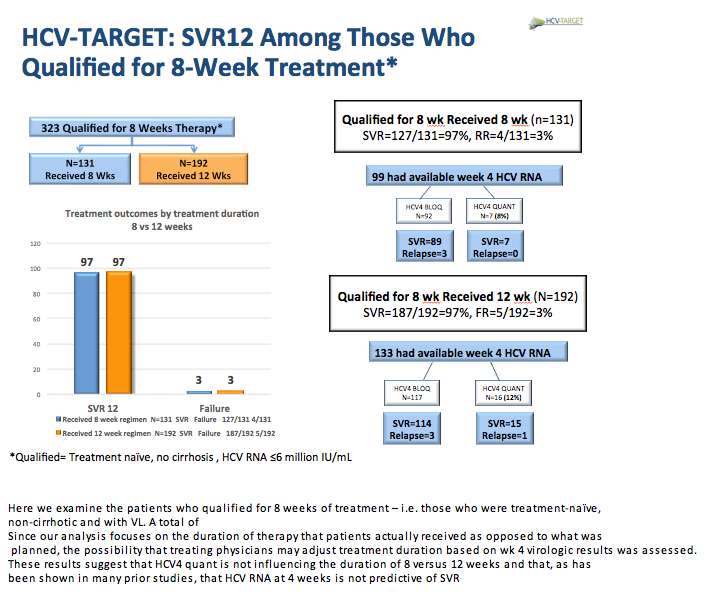
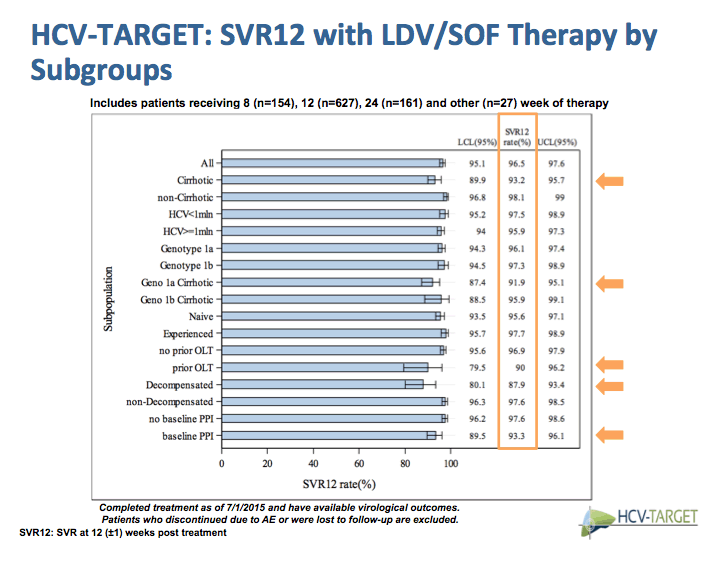
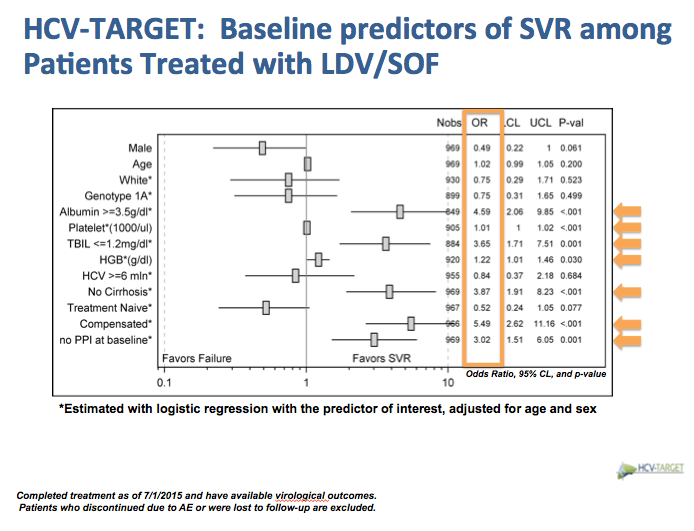


Because the treatment assignment was not random, selection bias was addressed through applying inverse probability weighting (IPW) for creating pseudo-randomization.
The IPW creates a "pseudo randomized population" in which each potential baseline predictor of treatment becomes balanced among the two groups. The underlying idea of this approach is to assign a weight to each patient so that all patient characteristics for treatment-specific groups become similar.
There are too many predictors in the models above, some of them are collinear. LASSO (Least Absolute Shrinkage and Selection Operator) - a regression method that involves penalizing the absolute size of the regression coefficients - was used to identify candidate predictors of SVR12.
The LASSO analysis penalizes the parameter estimates by constraining the sum of the absolute values of the estimates. This method is excellent with trying to decide what variables to include in a multivariable model if you believe the variables to be highly correlated.
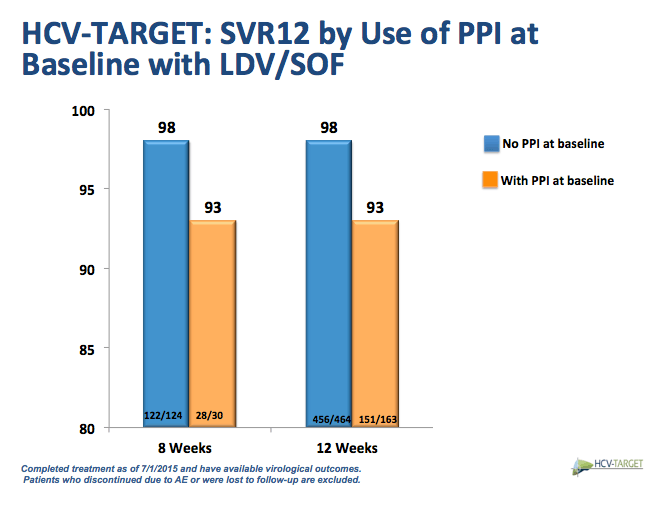
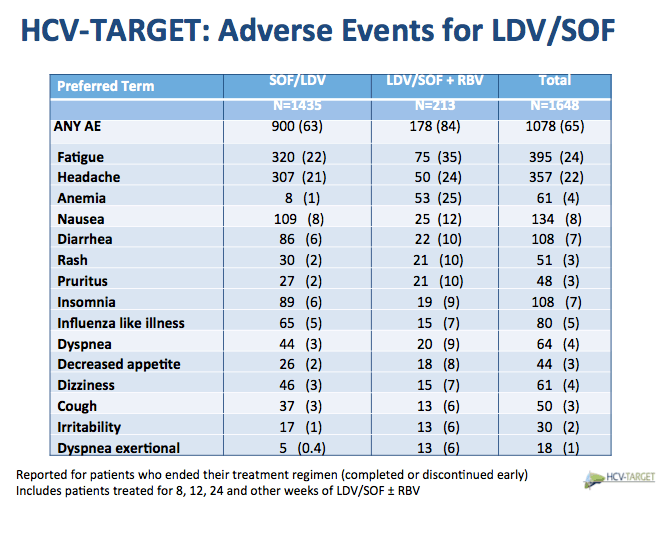
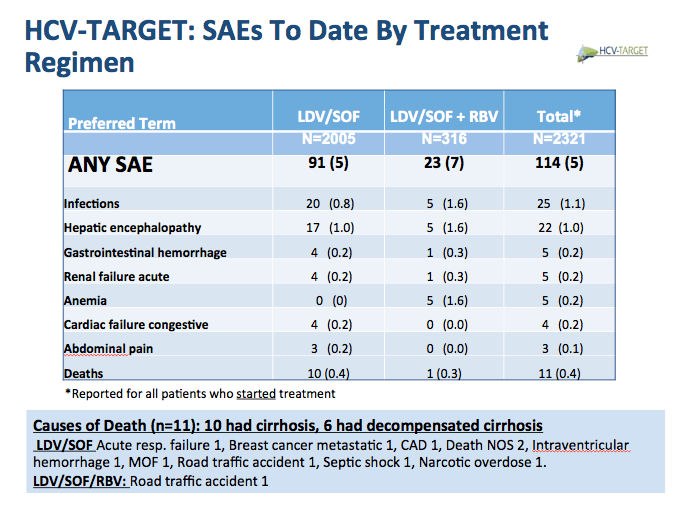
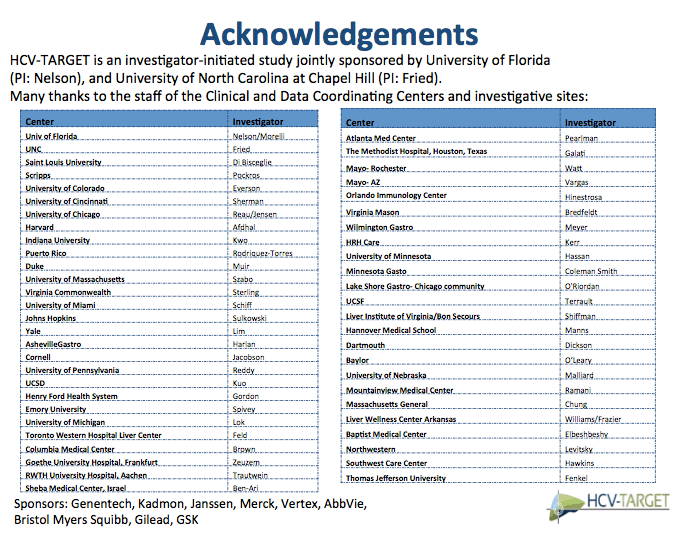
|
| |
|
 |
 |
|
|